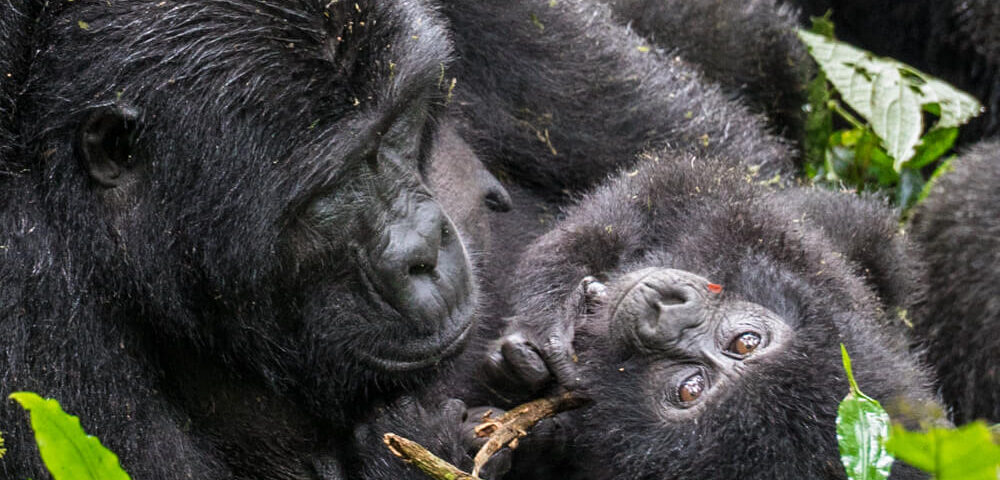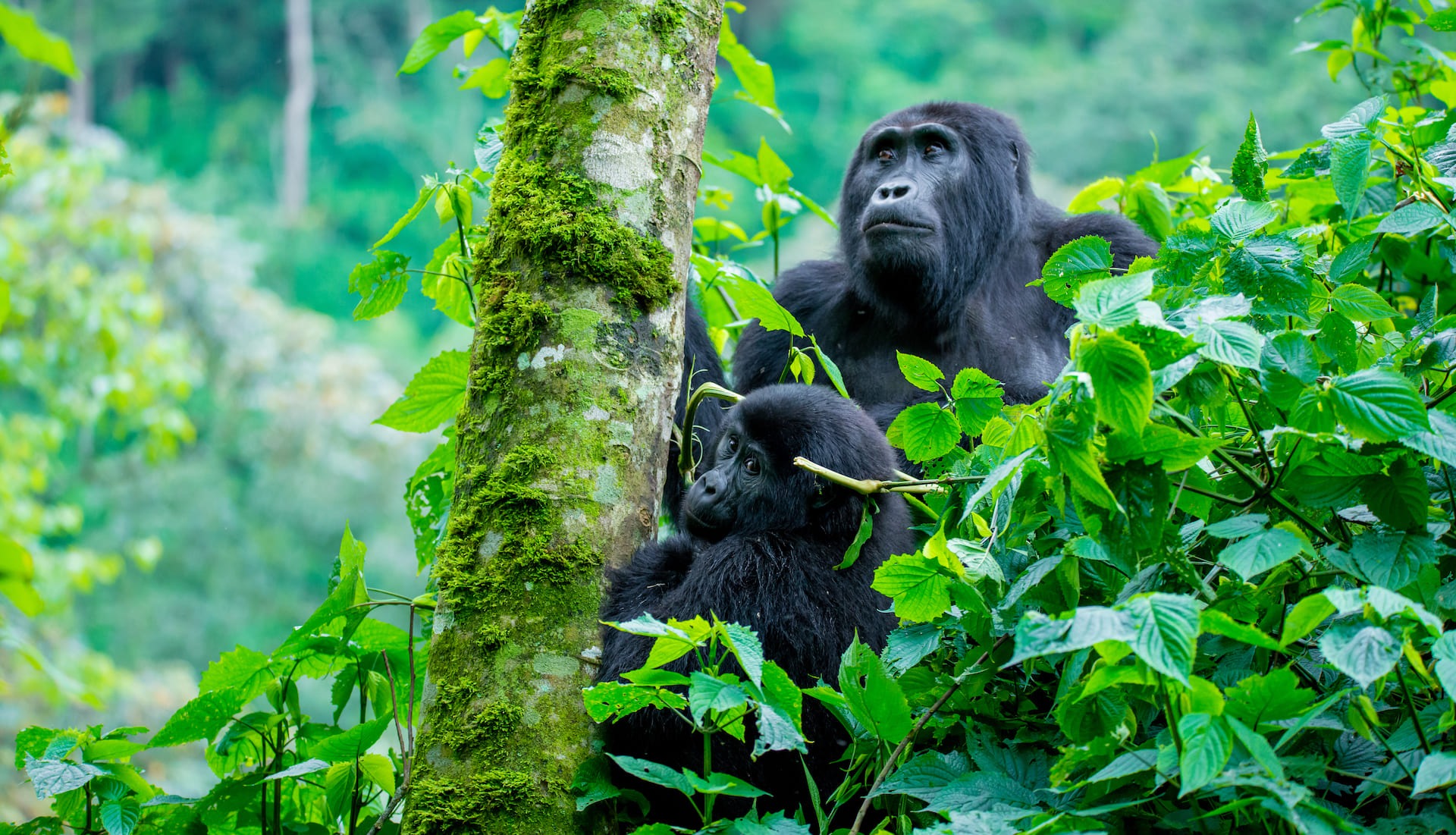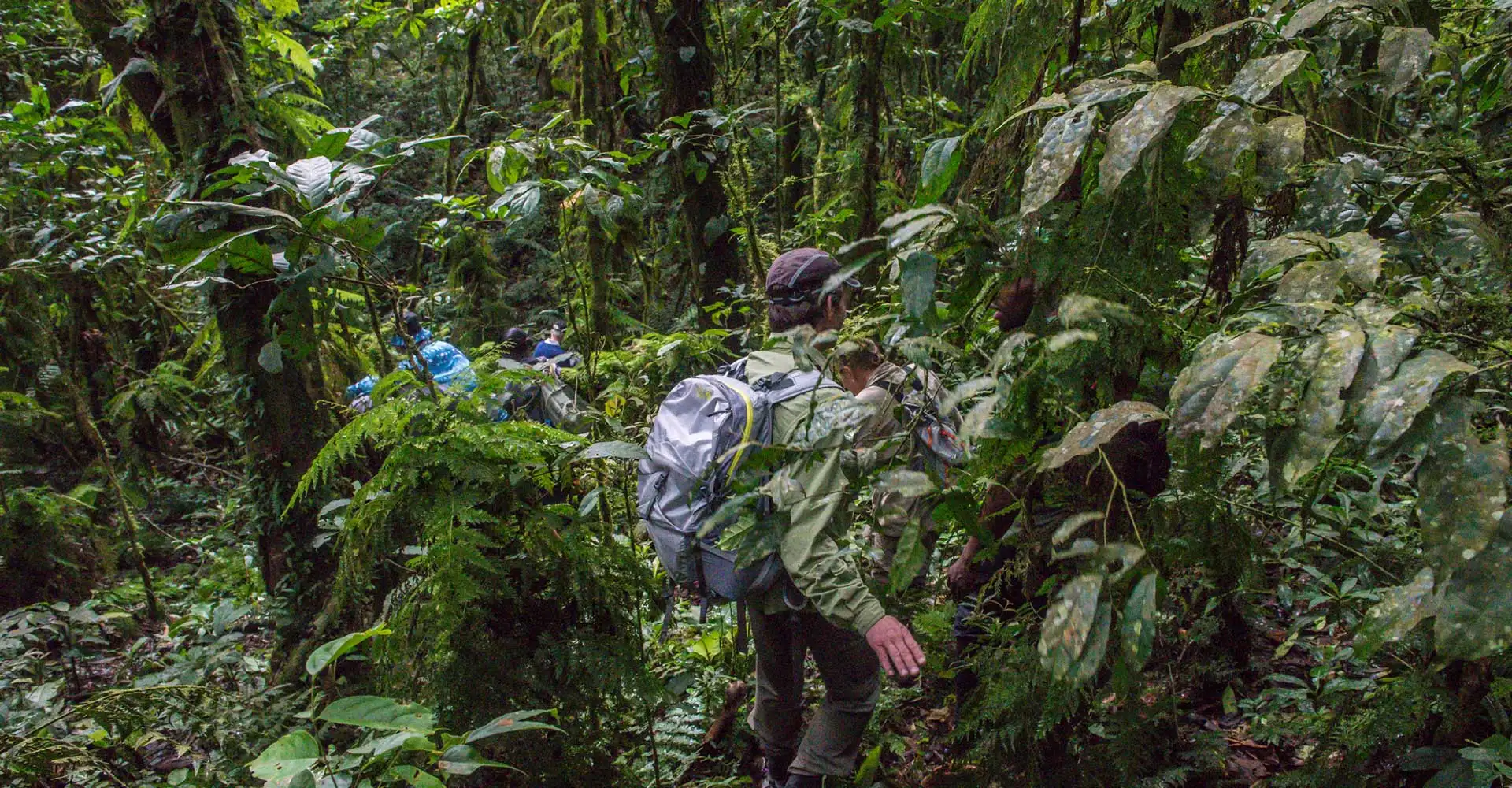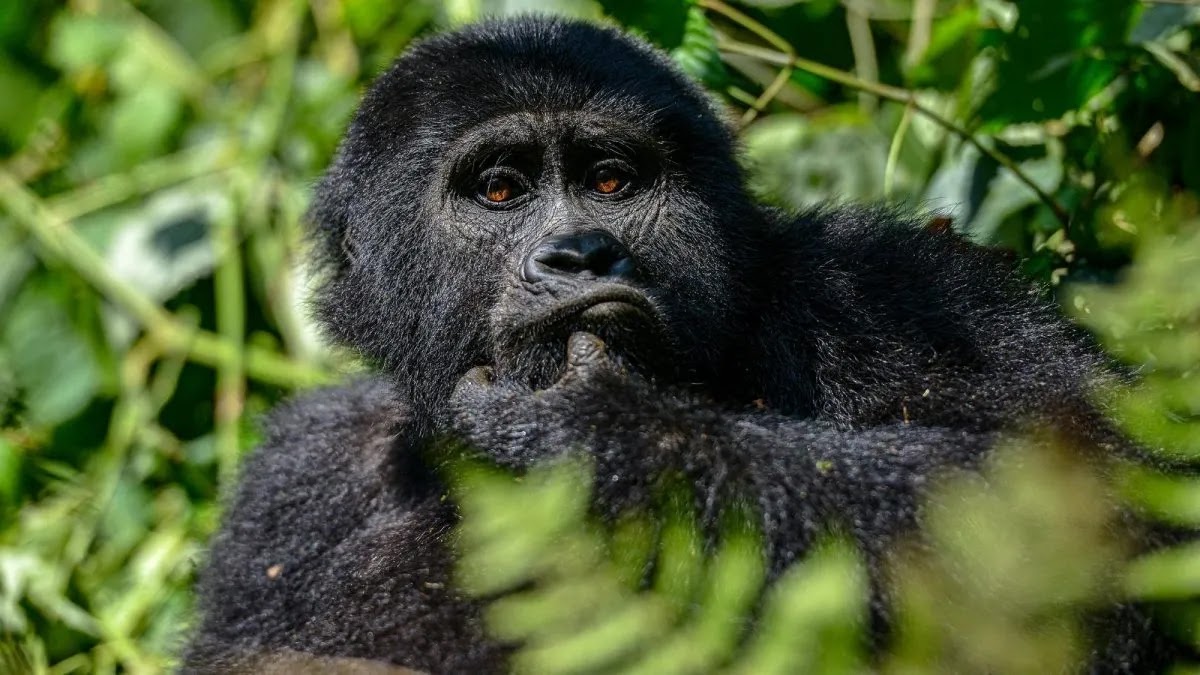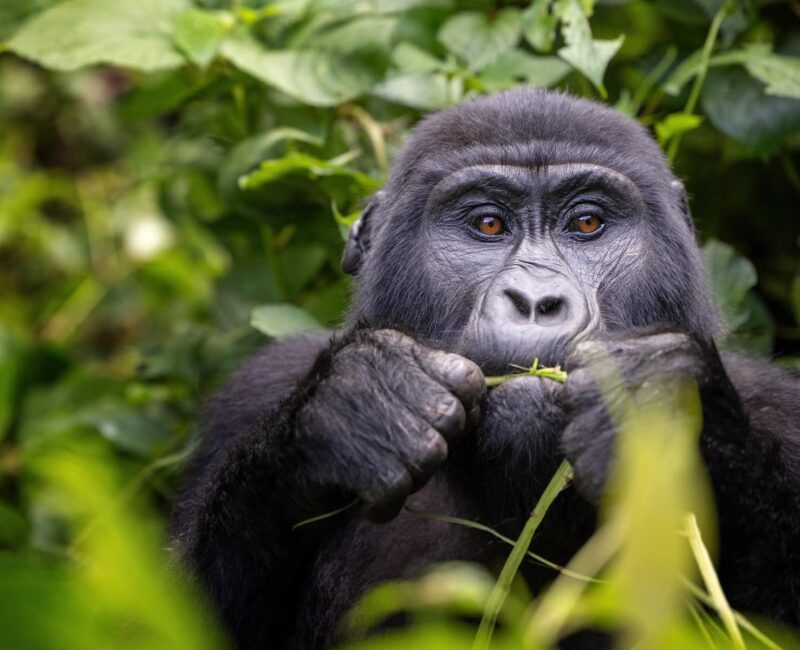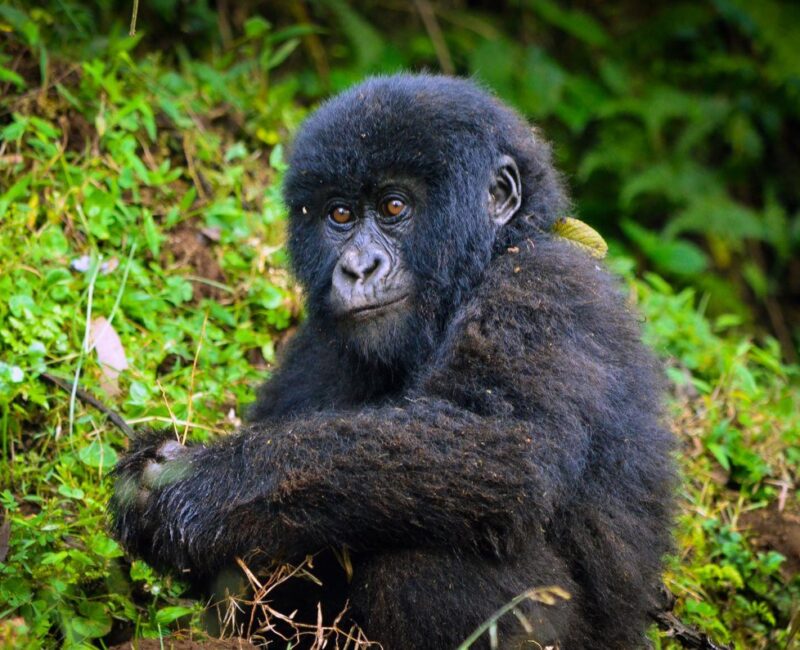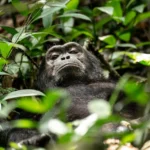
Primates in Kibale Forest National Park
September 23, 2025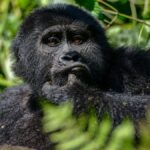
Understanding Gorilla Behavior During the Trekking Experience
September 23, 2025Gorilla Trekking vs Habituation in Uganda
Uganda stands as one of the most remarkable safari destinations in Africa. Offering travelers unparalleled encounters with mountain gorillas, primates and diverse wildlife. Among the country’s many attractions, the question often arises: what is the difference between Uganda Gorilla Trekking and the Gorilla Habituation Experience? Both activities allow visitors to spend time with gorillas in Bwindi Impenetrable National Park but they differ in intensity, duration, accessibility, and cost. These differences create distinct safari experiences that cater to a variety of travelers seeking authentic Uganda Gorilla Safaris, Uganda Wildlife Safaris and Uganda Safari Holidays.
Gorilla experiences in Uganda are carefully regulated to protect these endangered animals. Visitors participate under strict guidelines, ensuring minimal disturbance while allowing close observation. The country’s extensive wildlife tourism network connects Bwindi National Park with lodges offering cultural interactions, guided treks and personalized safari packages. These lodges also provide Uganda Safaris Holidays that integrate gorilla encounters with chimpanzee trekking, birdwatching and visits to local communities. Understanding the differences between trekking and habituation enhances the planning process, allowing travelers to tailor their itineraries to include a balance of adventure, learning, and cultural immersion during their Uganda Holidays.
Uganda Gorilla Trekking: Observing Habituated Gorillas
Uganda Gorilla Trekking provides a structured and accessible way to witness gorillas in their natural environment. The experience involves visiting a fully habituated gorilla family, allowing visitors to spend one hour observing and photographing the group. These gorilla families have undergone extensive habituation to human presence, ensuring that encounters are safe, predictable, and minimally disruptive. Trekking groups can accommodate up to eight participants, which balances intimate observation with accessibility for tourists.
Trekking permits for non-residents currently cost around $800, making Uganda Gorilla Trekking more financially accessible than the habituation experience. Participants walk through the dense Bwindi rainforest under the guidance of professional rangers, navigating varied terrain while learning about forest ecology, gorilla behavior, and conservation practices. While the trek lasts several hours depending on gorilla location, visitors spend only one hour directly with the gorillas, focusing primarily on observation and photography.
Many travelers ask: what can I expect from a Uganda Gorilla Safari focused on trekking? During the one-hour encounter, gorillas may play, forage, rest, or interact socially. Rangers provide insights into individual gorillas’ personalities, familial bonds, and feeding habits. The experience is ideal for travelers seeking Uganda Wildlife Tours with structured, accessible interactions that require minimal physical exertion while maximizing gorilla observation. Trekking also complements broader Uganda Safari Holidays, allowing travelers to combine primate encounters with chimpanzee trekking, birdwatching, and cultural experiences near safari lodges.
Uganda Gorilla Habituation Experience: A Deeper Connection
The Gorilla Habituation Experience offers a more immersive and participatory approach to observing gorillas. Unlike trekking, habituation involves spending four hours with a wild, yet-to-be-fully-habituated gorilla family. The experience is limited to four participants per group, ensuring a more intimate encounter that allows visitors to witness the gorillas’ socialization process in depth. Non-resident permits for habituation currently cost around $1,500, reflecting the extended duration, exclusivity, and additional conservation support provided by this activity.
During habituation, visitors witness gorillas gradually becoming accustomed to human presence. This process can involve shy or reclusive individuals, allowing observers to gain a deeper understanding of gorilla behavior, personalities, and familial dynamics. Unlike trekking, habituation participants actively observe how gorillas adapt to the presence of humans, providing valuable insights for researchers and conservationists. Questions such as, how do gorillas respond to humans during habituation? highlight the dynamic interaction, revealing behaviors rarely seen during shorter trekking encounters.
The four-hour duration and small group size create a profoundly intimate experience. Visitors can observe grooming, feeding, playful interactions, and social bonding within the gorilla family. The participatory nature of habituation allows tourists to follow the gorillas’ natural movements more closely, capturing detailed photographs and gaining firsthand knowledge of conservation strategies. Lodges near Bwindi National Park complement habituation experiences by offering cultural immersion, local village visits, and traditional dance or music performances. Integrating habituation into a Uganda Gorilla Safari or Uganda Wildlife Safari enhances the overall safari experience, blending wildlife observation with cultural enrichment.
Comparing Uganda Gorilla Trekking and Habituation
Understanding the distinctions between trekking and habituation helps travelers make informed decisions for their safari. One primary difference lies in time spent with gorillas: trekking offers one hour, while habituation provides four hours, allowing deeper observation and interaction. Group size also differs significantly, with trekking accommodating up to eight participants and habituation limited to four, enhancing intimacy and personal engagement.
Cost is another important factor. Uganda Gorilla Trekking permits for non-residents are generally lower, around $800, whereas habituation experiences cost approximately $1,500. The higher price reflects the longer duration, exclusive access, and active role in the gorillas’ acclimatization process. Experience type further distinguishes the two activities. Trekking emphasizes observation, photography, and accessibility, whereas habituation immerses visitors in the gorillas’ daily lives, providing educational insight and participatory observation.
Travelers often ask: which experience offers more value for wildlife enthusiasts? The answer depends on personal preferences. Trekking suits those seeking structured, accessible encounters that fit within broader Uganda Safari Holidays. Habituation appeals to travelers seeking unparalleled intimacy, in-depth behavioral understanding, and a longer, hands-on safari experience. Both experiences complement Uganda Gorilla Safaris, Uganda Wildlife Safaris and multi-park itineraries that integrate chimpanzee trekking, cultural engagement and other wildlife activities.
Immersion and Learning: Gorilla Behavior and Social Dynamics
The level of immersion distinguishes trekking from habituation. Habituation participants observe gorillas in an ongoing process of adaptation, witnessing shy or semi-habituated individuals foraging, grooming, and interacting socially. This offers travelers rare insights into gorilla communication, hierarchy, and personality traits, enriching any Uganda Wildlife Safari. Trekking, by contrast, provides structured observation, ideal for those prioritizing photography and time efficiency during their Uganda Safari Holiday.
During habituation, visitors notice subtle behaviors, such as how dominant silverbacks maintain control, how mothers care for infants, and how subordinates interact. These observations are often difficult to capture during one-hour trekking experiences. Travelers often ask: what is the educational value of habituation compared to trekking? Habituation offers a more participatory learning environment, bridging the gap between casual observation and scientific understanding, and positioning participants as informed advocates for conservation.
Nearby lodges amplify this learning by offering guided tours, educational presentations, and workshops that contextualize gorilla behavior within Uganda’s broader ecosystems. Integrating habituation into Uganda Gorilla Safaris enhances credibility and expertise, establishing safari providers as authoritative sources for travelers seeking meaningful wildlife encounters. The experience merges education, adventure, and conservation awareness in a way that few other safari activities can match.
Location and Accessibility: Bwindi National Park
Bwindi Impenetrable National Park hosts both trekking and habituation experiences, though location differences exist. Gorilla trekking is available in multiple park sectors, providing accessibility for travelers across Uganda. Habituation experiences are limited to the Rushaga sector in the southern part of Bwindi, emphasizing exclusivity, smaller groups, and longer immersion. This location enables participants to follow gorillas closely while minimizing disturbance to other park visitors.
Travelers planning Uganda Gorilla Safaris often combine trekking in accessible sectors with habituation in Rushaga to maximize both exposure and intimacy. Questions such as, how should I plan my itinerary to experience both activities? highlight the importance of professional safari guidance. Expert tour operators ensure seamless travel, lodge accommodations, and cultural integration, creating well-rounded Uganda Safaris Holidays that combine adventure, education, and authentic local experiences.
The geographic diversity of Bwindi also enhances safari value. Lodges strategically located near trekking and habituation routes provide easy access while offering cultural experiences, community engagement, and optional excursions. This integration ensures that travelers experience Uganda’s wildlife, culture, and hospitality in a single, unforgettable journey.
Cultural Experiences Around Gorilla Lodges
Uganda’s gorilla lodges do more than facilitate wildlife observation; they provide cultural immersion. Visitors can engage in local village tours, craft demonstrations, traditional cooking classes, and music or dance performances. These activities complement Uganda Wildlife Tours, allowing travelers to connect with Ugandan communities while observing gorillas.
Lodges often organize visits to tea and coffee plantations, showcasing Uganda’s agricultural heritage. Ethical tourism initiatives enable travelers to contribute positively to communities, reinforcing sustainable safari practices. Travelers ask, how can I engage with local culture during my Uganda Safari Holiday? Lodges provide structured programs that balance cultural exposure with responsible tourism, enhancing the overall safari experience. Combining gorilla trekking or habituation with cultural activities creates a holistic, educational, and immersive Uganda Safaris Holiday that appeals to a global audience.
Planning Your Ultimate Uganda Safari
For travelers seeking the ultimate African adventure, integrating gorilla trekking and habituation ensures a comprehensive wildlife experience. Combining Uganda Gorilla Trekking, Uganda Gorilla Safaris, Uganda Wildlife Safaris, and other Uganda Tours creates multi-day itineraries that highlight Uganda’s rich biodiversity, scenic landscapes, and cultural heritage.
Professional safari operators assist in creating balanced trips, integrating chimpanzee trekking, gorilla encounters, birdwatching, and community engagement. Travelers can customize Uganda Safaris Holidays according to personal interests, physical ability, and time availability. Questions like, which experience offers the best value for first-time visitors? are addressed by matching trekking for accessibility with habituation for immersive learning. Lodges, guides, and park staff ensure every safari aligns with conservation priorities, educational opportunities, and adventure expectations.
A well-planned Uganda Safari Holiday guarantees encounters with primates, cultural enrichment, and luxury lodge comfort. Integrating both trekking and habituation allows travelers to experience the full spectrum of gorilla interaction, from structured observation to participatory immersion. The combination positions Uganda as a global leader in wildlife tourism and establishes safari providers as authoritative experts in African wildlife and conservation tourism.
Choosing Between Trekking and Habituation
Gorilla trekking and habituation in Uganda provide distinct yet complementary safari experiences. Trekking offers structured, accessible encounters with habituated gorilla families, ideal for photography, short visits, and integration into broader Uganda Wildlife Safaris. Habituation offers prolonged, intimate encounters with semi-habituated gorillas, providing deeper insight into behavior, social dynamics, and conservation processes.
For travelers planning Uganda Gorilla Safaris or Uganda Safari Holidays, combining both experiences ensures a balance of accessibility, education, and immersion. Lodges and safari operators provide cultural integration, ethical tourism practices, and expert guidance, enhancing the value of each safari. Uganda stands as a premier destination for wildlife enthusiasts, offering experiences that range from close-up gorilla observation to participatory habituation. These adventures create lasting memories, foster conservation awareness, and position Uganda as a leader in global safari tourism

